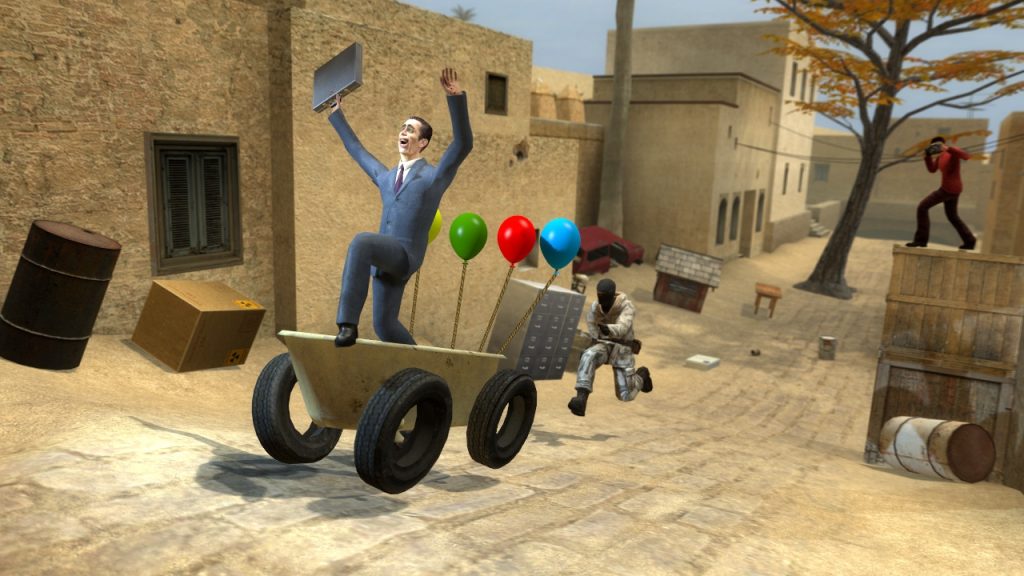Assignment: Give us your big picture ideas about how emerging technologies and new forms of storytelling will change the media landscape.
This course has challenged us with imagining the future of storytelling: if we image a future where assets like settings, characters, plots, and other story elements are created on a massive scale by individual users and shared within a network, how do creators find each other and collaborate? How will creative skillsets that currently require specialized and expensive knowledge be further democratized and made widely accessible?
There are already case studies readily available to us on the internet in how this can be done. I will look at the following fandom communities and examine how assets are created, remixed, and shared currently and try to imagine how this will evolve over time:
- Tumblr TV Fandoms
- Gamer Mods
Tumblr

Scroll through any tag even containing the word #fan on Tumblr and behold acres and acres of sometimes brilliant, but mostly cringe-worthy, fan-created and remixed content.
On this platform, creators use tags to self-filter their contributions and their consumption. When users follow their favorite profiles as well as their favorite tags, those posts will automatically show up chronologically on their dash. Additionally, users can search tags for like content chronologically or by popularity.
Users can post their own content in the form of text, images, and videos or they can reblog others’ posts. Notes, the metric by which the popularity of a post is measured, are recorded on each post in the form of Likes, Reblogs, and Replies.
Replies are what makes the remixed fan content you will find on Tumblr so interesting to the discussion of the future of storytelling. Rarely will posts remain in isolation. Tumblr’s endless-scrolling nature allows for things like gif-sets of popular culture, sequential screen grabs that when combined form new meanings––forms of storytelling unique to the platform. With Replies, users end up generating long chains of additions to original posts that become a form of collaborative storytelling (and joke telling), internet sleuthing, historical research/context, and even critical discourse (of varying degrees of quality).
People with similar interests find each other through a shared visual and cultural vocabulary. As a result of its meme-ifying architecture and its millions of users’ creative labor, Tumblr is uniquely situated to help us imagine what a future of fully networked narrative content could look like. The next step would be thinking beyond the memes and the monkeyshines towards how this shared vocabulary could evolve into actual shared 3D assets.
A Note on Bias and Toxicity
One aspect of internet fan-culture that cannot be understated is its tendency towards toxicity and exclusivity: a boys-club, if you will. Even if the majority of internet fans don’t create their virtual communities with the intention of excluding those deemed other, we still bring our biases into our virtual escapes. Tumblr has a number of examples of horrendous mob-like bullying and straight up hate, just as it does beautiful expressions of collective creativity––much like the internet as a whole. It is imperative to stay vigilant and critical, both within and without.
I am optimistic, however, in the power of experiential technology. To reiterate part of my post from the first week of class, the democratization of cinema will affect the mainstream culture at large:
When the wealth of experience there is in the world is more broadly represented and when more audiences have access to it, we may no longer have to endure the failure of imagination our society now faces.
The big question now is how.
Video Game Mods
There are multiple examples throughout the history of video games of enthusiasts modifying the code, textures, visuals, and mechanics of their favorite video games to riff on the existing assets or create entirely new properties. Today, mods can be purchased on Steam, the social network slash gaming platform, and many more are shared as open source projects. These platforms are usually focused on competition (they are games, after all), although The problem of accessibility still remains: There is no centralized resource through which to access the elements of the mod nor is there any way to make them or combine them without some amount of specialized knowledge.
While my personal favorite use of this medium is for goof-em-ups (see examples below), fully independent narrative and artful games have been created using mods. As the technology for creating virtual assets progresses, these techniques will become more and more accessible. I would like to explore the possibility of using these existing assets to create interactive stories within the sandboxes mod-enthusiasts have already built.
I want to bring special attention to Garry’s Mod (link below). Garry’s Mod (or GMod) is a physics sandbox made with a modified version of Valve’s source engine. Valve is the gaming company that brought us seminal classics like the Half-Life series and Team Fortress. Fans buy the mod from Steam and use it to make their own worlds and characters, sharing them in game using Multiplayer and broadcasting them on streaming services like Twitch and YouTube. In the mid-to-late-aughts, there was even a renaissance of comics created using GMOD. Concerned was a personal favorite.

While the majority of things created with these mods and the communities around them are juvenile, ridiculous, and honestly hard to parse, I don’t think that is necessarily inherent in the form. I’m not above taking inspiration from these long-running, real world examples of networked, collaborative creation.

Leave a Reply
You must be logged in to post a comment.